| |
|
Xiamen Oil Paintings, Wholesale Direct!
|
|
100% hand painted, 100% cotton canvas, 100% money back if not satisfaction. |
|
|
|
|
ART WORKS INDEX
A
B
C
D
E
F
G
H
I
J
K
L
M
N
O
P
Q
R
S
T
U
V
W
X
Y
Z
|
|
ARTISTS INDEX
A
B
C
D
E
F
G
H
I
J
K
L
M
N
O
P
Q
R
S
T
U
V
W
X
Y
Z
|
|
|
|
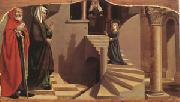 |
Nicolas Dipre
|
|
b Paris; fl 1495; d by 14 March 1532). French painter. Documents describe him as parisianus, and he appears to have belonged to a family of painters from Ypres or Amiens. His father, Nicolas Dipre the elder ( fl 1464, d before 1508), known as Colin d'Amiens, worked as a painter in Paris and was sufficiently well known in 1481 to be commissioned to produce a design for the tomb of Louis XI; his grandfather was probably the Andre d'Ypres documented in Amiens from 1435 to 1444. Nicolas Dipre is first referred to in 1495 in Avignon, where he worked for the rest of his life, gaining a widespread reputation.
|
|
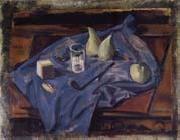 |
Nicolas de Stael
|
|
Russian Painter.1914-1955
was a painter known for his use of a thick impasto and his highly abstract landscape painting. He also worked with collage, illustration and textiles Nocolas de Stael was born in the family of a Russian Lieutenant General, Baron Vladimir Stael von Holstein, (a member of the Stael von Holstein family, and the last Commandant of the Peter and Paul Fortress) and his wife, Olga Sakhanskaya. De Stael's family was forced to emigrate to Poland in 1919 because of the Russian Revolution; Both, his father and stepmother, would die in Poland and the orphaned Nicolas de Stael would be sent with his older sister Marina to Brussels to live with a Russian family (1922). He eventually studied art at the Brussels Acad??mie royale des beaux-arts (1932). In the 1930s, he travelled throughout Europe, lived in Paris (1934) and in Morocco (1936) (where he first met his companion Jeannine Guillou, also a painter and who would appear in some of his paintings from 1941-1942) and Algeria. In 1936 he had his first exhibition of Byzantine style icons and watercolors at the Galerie Dietrich et Cie, Brussels. He joined the French Foreign Legion in 1939 and was demobilized in 1941.
|
|
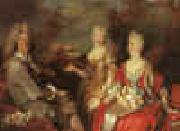 |
Nicolas de Largilliere
|
|
1656-1746
French
Nicolas de Largilliere Gallery
Nicolas de Largilli??re (October 10, 1656 - March 20, 1746), French painter, was born in Paris.
His father, a merchant, took him to Antwerp at the age of three. As a boy, he spent nearly two years in London. Sometime after his return to Antwerp, a failed attempt at business led him to the studio of Goubeau. However, Largilli??re left at the age of eighteen to seek his fortune in England, where he was befriended and employed by Lely, for four years at Windsor.
His skills attracted Charles II, who wished to retain him in his service, but the fury aroused by the Rye House Plot against Roman Catholics alarmed Largilli??re. He left for Paris where he was well received by Le Brun and Van der Meulen. Despite his Flemish training as a portrait-painter, his reputation was soon established. Largilli??re's brilliant colour and lively touch attracted celebrities of his day??actresses, public men and popular preachers flocked to his studio. President Lambert, with his beautiful wife and daughter, were among his most noted subjects.
|
|
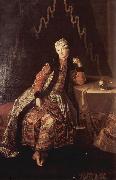 |
Nicolas de Largilliee
|
|
Largilliere's father, a merchant, took him to Antwerp at the age of three. As a boy, he spent nearly two years in London. Sometime after his return to Antwerp, a failed attempt at business led him to the studio of Goubeau. However, Largilliere left at the age of eighteen and went to England, where he was befriended and employed by Peter Lely for four years at Windsor, Berkshire.
Painting careerEarly careerHis painting caught the attention of Charles II, who wished to retain Largilliere in his service, but the controversy aroused by the Rye House Plot against Roman Catholics alarmed Largilliere. Largilliere left for Paris, where he was well-received by the public as a painter.
Upon ascending to the throne in 1685, James II requested Largilliere to return to England. James II offered Largilliere the office of keeper of the royal collections, but he declined due to being uneasy about Rye House Plot. However, during a short stay in London, he painted portraits of the king, the queen Mary of Modena, and the prince of Wales James Francis Edward Stuart. The portrait of the Prince of Wales could not have been painted during Largilliere's stay in London because the prince was not born until 1688. The three portraits painted by Largilliere of the prince in his youth must have been executed in Paris, where he returned sometime before March 1686. The portrait of King James II was painted in 1686. King James is portrayed in golden armor with a white cravat and is positioned in front of a watercolour-like background set in a round frame.
|
|
|
|
|
|
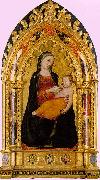 |
Niccolo di Pietro Gerini
|
|
Italian Painter, active ca.1368-1415
died in Florence in 1415, earned reputation of an important Italian painter. He represents giottesque school, in the tradition of the Andrea di Orcagna (1320-1368) and of Taddeo Gaddi. His father Pietro Geri is registered as a member of Lucas Guild in 1339. Niccolo worked mainly in Florence, although he also carried out commissions in Rome (Vatican), Pisa and Prato.
He was first recorded in 1368 as a member of the Arte dei Medici e Speziali in Florence but is identifiable with the Niccolo dipintore who collaborated with Jacopo di Cione on frescoes for the Guildhall of the Judges and Notaries in Florence in 1366. It is self-evident that he is the Niccolaio dipintore who worked with Jacopo di Cione on the altarpiece of the Coronation of the Virgin (presently in London, National Gallery) for St Pier Maggiore, Florence in 1370 and was paid 12 golden florins per disegnare la tavola dell altare in November of the same year. He designed the altarpiece and the elaborate throne canopy with his usual fine painting and detailed ornaments whilst Jacopo di Cione was depicting side saints. This altarpiece is amongst of very few largest commissioned in 14th century Florence. It was seemingly commissioned by Albizzi family.
He was collaborating with Jacopo di Cione on Coronation of the Virgin (Accademia, Florence) in 1372. Offner and Steinweg suggest that he was responsible for the design and fine painting and Jacopo for the execution of saints. It was commissioned by the mint of Florence Zecca Vecchia on the same year.
In 1383 Gerini again worked with Cione on a fresco of the Annunciation in the Palazzo dei Priori, Volterra. This fresco clearly shows the work of two very different artists: Niccolo di Pietro Gerini (design and very fine painting) and Jacopo di Cione (broadly painted saints and side decoration). In 1386 Niccolo frescoed the façade of the Bigallo, Florence. He also frescoed Sant Ambrogio church in Florence
Gerini performed the Crocefissione of St Felicita church in Florence.
His hand is clearly on sacrestia of the basilica of Saint Croce to Florence with Scenes of the life of Christ. Between 1391 and 1392 he worked in Prato where he frescoed Palazzo Datini, church of Saint Francisco with Lorenzo di Niccolo and Agnolo Gaddi.
He also frescoed capitolare of the church of Saint Francisco, Pisa.
Very typically for Gothic depiction Gerini figures have large chins, sloping foreheads, and sharp noses whilst their bodies are squat and frontally displaced.
Another important artist Lorenzo di Niccol?? di Martino was trained in Niccol?? di Pietro Gerini workshop and later collaborated with the master but was not his son as sometimes erroneously stated. Gerini though had a son Bindo di Niccolo di Pietro Gerini, born in 1363, who is registered as member of Lucas Guild since 1408.
Niccolo di Pietro Gerini works can be found in major art galleries of Rome, Vatican, Florence, London, Milan, New York, Los Angeles, Amsterdam, Berlin, Paris, St Petersburg, Boston, Cambridge, Budapest, Birmingham, Pegalo, Prato, Pisa, Altenburg, Avignon, Denver and several other museums.
|
|
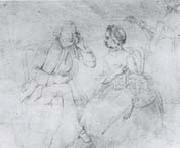 |
Nathaniel Dance
|
|
English Painter, 1735-1811,Painter and politician, elder son of George Dance . He trained under Francis Hayman before travelling to Rome in 1754. As Nathaniel Dance he established himself as a portrait painter but was determined to succeed as a history painter. His picture the Death of Virginia (1759; untraced, but known from a sketch, London, Soane Mus.) is of documentary importance as the first dated Classical history painting by a British artist working in Rome. In 1762 Dance assisted Pompeo Girolamo Batoni, whose influence brightened his palette and introduced him to a grander clientele, including Edward Augustus, Duke of York (1739-67), who sat for both artists in 1764 (Dance's Edward Augustus, Duke of York, London, Buckingham Pal., Royal Col.). In the same year Dance painted a portrait of Angelica Kauffman (Burghley House, Cambs), with whom he was in love. He returned to London in 1765 and rapidly achieved fame as a portrait and history painter. His Timon of Athens (1767; London, Buckingham Pal., Royal Col.) was purchased by George III; but after the King appointed Benjamin West to be his history painter in 1772, Dance concentrated on portraits. He was among the 22 artists who successfully petitioned the King in 1768 to establish a Royal Academy, and he served for periods as a council member and visitor, until 1782. At the Academy's first exhibition (1769) Dance showed full-length portraits of George III and Queen Charlotte (Uppark, W. Sussex, NT); two years later he exhibited David Garrick as Richard III (Stratford-on-Avon, Town Hall). In the mid-1770s Dance became financially independent, and his output declined sharply, virtually ceasing after his marriage in 1783 to a wealthy widow. He resigned from the Academy in 1790 on his election as Member of Parliament for East Grinstead and subsequently only exhibited occasional landscapes as a 'gentleman'. In 1800 he was created a baronet and assumed the name of Dance-Holland; he died worth over
|
|
 |
Nardo di Cione
|
|
Italian Byzantine Style Painter, active 1343-ca.1365
was an Italian painter, sculptor and architect from Florence. He was the brother of the more accomplished Andrea di Cione, called Orcagna, as well as Jacopo di Cione; they were important members of the Painter's Guild of Florence. While Orcagna has been noted as the more accomplished artist, Nardo developed his own unique style, described as a pronounced lyrical vein, a feeling for poetic values, strong human sympathies and great sensitivity to colour as a means of subtle differentiation and soft modeling. The brothers collaborated on a number of works from their studio together, including the decorations from the Cappella Strozzi in the Santa Maria Novella. While Orcagna painted the altarpiece, Nardo executed the frescoes of The Last Judgment, Paradise and Hell.
|
|
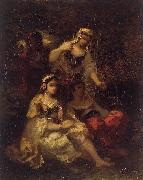 |
Narcisse Virgilio Diaz
|
|
August 25, 1807-November 18, 1876) was a French painter of the Barbizon school.
Diaz was born in Bordeaux to Spanish parents. At the age of ten, Diaz became an orphan, and misfortune dogged his early years. His foot was bitten by a reptile in Meudon wood, near Sevres, where he had been taken to live with some friends of his mother. The bite was poorly dressed, and ultimately he lost his leg. However, as it turned out, the wooden stump that replaced his leg became famous.
At fifteen he entered the studios at Sevres, first working in the decoration of porcelain occupied him and later turning to painting. Turkish and Oriental scenes attracted him, and he took to painting Eastern figures dressed in richly coloured garments; many of these paintings remain extant. He also spent much time at Barbizon.
At Fontainebleau Diaz found Rousseau painting his wonderful forest pictures, and was determined to paint in the same way if possible. However, Rousseau was then in poor health, embittered against the world, and consequently was difficult to approach. On one occasion, Diaz followed him surreptitiously to the forest, wooden leg not hindering, and he dodged round after the painter, trying to observe his method of work. After a time Diaz found a way to become friendly with Rousseau, and revealed his eagerness to understand the latter's techniques. Rousseau was touched with the passionate words of admiration, and finally taught Diaz all he knew.
Diaz exhibited many pictures at the Paris Salon, and was decorated in 1851. During the Franco-German War he went to Brussels. After 1871, his works became fashionable and rose gradually in the estimation of collectors, and he worked constantly and successfully. Diaz's finest pictures are his forest scenes and storms, and it is on these that his fame rests. There are several examples of his work in the Louvre, and three small figure pictures in the Wallace Collection, Hertford House.
|
|
|
|
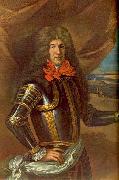 |
Musee national de la Marine
|
|
(National Navy Museum) is a maritime museum located in the Palais de Chaillot, Trocadero, in the XVIe arrondissement of Paris. It has annexes at Brest, Port-Louis, Rochefort (Musee National de la Marine de Rochefort), Toulon and Saint-Tropez. The permanent collection originates in a collection that dates back to Louis XV of France.
In 1748, Henri-Louis Duhamel du Monceau offered a collection of models of ships and naval installations to Louis XV of France, with the request that the items be displayed at the Louvre and made available to students of the Naval engineers school, which Duhamel headed. The collection was put on display in 1752, in a room of the first floor, next to the Academy of Sciences; the room was called "Salle de Marine" (Navy room), and was used for teaching.
With the French Revolution, the Salle de Marine closed in 1793. The collection was added to models owned by the King personally, to others owned by the Ministry of Navy, and yet others owned by emigres or executees (notably Philippe Égalite). A short-lived museum was opened between 1801 and 1803 at the Ministry of Navy, then located at Place de la Concorde.
|
|
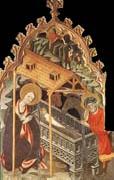 |
MUR, Ramon de
|
|
Catalan painter
active in first half of 14th century in Tarragona
|
|
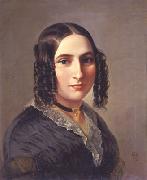 |
Moritz Daniel Oppenheim
|
|
(January 7, 1800, Hanau, Germany - February 26, 1882, Frankfurt am Main) was a German painter who is often regarded as the first Jewish painter of the modern era. His work was informed by his cultural and religious roots at a time when many of his German Jewish contemporaries chose to convert. Oppenheim is considered by the scholar Ismar Schorsch to be in sympathy with the ideals of the Wissenschaft des Judentums movement, because he remained "fair to the present" without denying his past.
Oppenheim was born to Orthodox Jewish parents at Hanau, Germany in 1800; he died at Frankfurt am Main in 1882. His niece was the wife of student and fellow painter Benjamin Prins, Rosa Benari.
He received his first lessons in painting from Westermayer, in Hanau, and entered the Munich Academy of Arts at the age of seventeen. Later he visited Paris, where Jean-Baptiste Regnault became his teacher, and then went to Rome, where he studied with Bertel Thorwaldsen, Barthold Georg Niebuhr, and Friedrich Overbeck. There he studied the life of the Jewish ghetto and made sketches of the various phases of its domestic and religious life, in preparation for several large canvases which he painted upon his return to Germany. In 1825 he settled at Frankfurt, and shortly after exhibited his painting David Playing Before Saul, to see which a great number of admirers from all parts of Europe visited his studio. In 1832, at the instance of Goethe, Charles Frederick, Grand Duke of Saxe-Weimar-Eisenach conferred upon him the honorary title of professor.
|
|
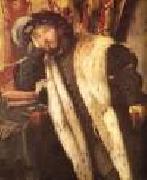 |
MORETTO da Brescia
|
|
Italian High Renaissance Painter, 1498-1554
Italian painter. Together with Romanino and Giovanni Girolamo Savoldo, he was one of the most distinguished painters of Brescia of the 16th century. Influenced by both Lombard verism and contemporary Venetian painters, Moretto created an individual style in which realism and Venetian light and colour were perfectly balanced. He was personally involved in the local movement of Roman Catholic reform, and this is reflected in his direct, solemn and often moving depictions of religious subjects.
|
|
|
|
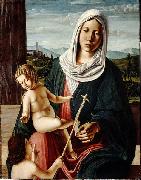 |
Michele da Verona
|
|
(Michele di Zenone) (born 1470) was an Italian painter of the Renaissance period.
He was born in Verona, a contemporary of Paolo Morando(Cavazzola), and may have assisted him in the decorative work for San Bernardino there. Inside the portal of San Stefano, Milan, is a large Crucifixion signed by him in 1500, and formerly in the Refectory of San Giorgio, of Verona. The same subject, dated by him in 1505, is in Santa Maria in Vanzo, Padua. In both pictures there is an imitation of the manner of Jacopo Bellini. In the church of Santa Chiara, Verona, are frescoes representing the Eternal, with Angels, Prophets, and the four Evangelists, dated 1509. Frescoes of later dates exist in the churches of Vittoria Nuova and Sant' Anastasia; while in the church of Villa di Villa, near Este, is a Madonna and Child, between SS. John the Baptist, Lawrence, Andrew, and Peter dated 1523.
|
|
|
|
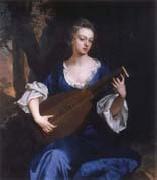 |
Michael Dahl
|
|
Swedish Baroque Era Painter, 1659-1743,Swedish painter, active in England. He studied under Martin Hannibal (d 1741) and later with David Kl?cker Ehrenstrahl. In 1682 he travelled to London, where he became acquainted with Godfrey Kneller and Henry Tilson, and in 1685 he left for Europe with the latter, working briefly in Paris before proceeding to Venice and Rome, where they stayed for about two years. In Rome Dahl converted to Roman Catholicism and gravitated towards the circle of Christina, former Queen of Sweden, who sat for him (Grimsthorpe Castle, Lincs). He returned to England with Tilson via Frankfurt and arrived in London in 1689; he stayed in England for the remainder of his career.
|
|
|
|
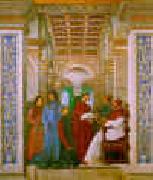 |
Melozzo da Forli
|
|
1438-1494
Italian
Melozzo da Forli Location
Melozzo came, it is supposed, of a wealthy family named Ambrosi from Forl??. Nothing is known about his early years, and it is only a hypothesis that he formed at the Forlivese school of art, then ruled by Ansuino da Forl??, for they were both influenced by the Mantegna manner.
It has been said that he became a journeyman and color-grinder to some of the best masters, in order to prosecute his studies; this lacks confirmation. His presence his first mentioned in his birthplace in 1460 and again in 1464. Around this period, together with Antoniazzo Romano, frescoed the Bessarione chapel in the basilica dei Santi Apostoli in Rome. Melozzo presumably moved to in Urbino between 1465 and 1475: here he met the highly theoretical and mathematical Piero della Francesca, who profoundly influenced the Melozzo style and use of perspective. He should have also studied the architectures by Bramante and other Flemish painters then working for the duke Federico da Montefeltro: perhaps Melozzo worked with Justus of Ghent and Pedro Berruguete to the decoration of the studiolo of the famous Ducal Palace of the city.
In 1475 Melozzo transferred to Rome, though some authorities claim his presence in Rome ten (or five) years earlier to work in the Basilica di San Marco. In 1477 he finished his first major work in the new seat, a fresco now transferred to canvas and placed in the Pinacoteca Vaticana, representing the appointment of Bartolomeo Platina by Sixtus IV as librarian of the restored Vatican Library. In 1478 he was one of the original members of the academy of St Luke, founded by Sixtus IV to unite the main painters working in the city.
About 1480 Melozzo was commissioned by Pietro Riario to paint the vault of the apse in the basilica dei Santi Apostoli in Rome, his subject being the Ascension. The figure of Christ is so boldly and effectively foreshortened that it seems to burst through the vaulting; this fresco was taken down in 1711, and the figure of Christ is now in the Quirinal Palace; while some of the other portions, almost Raphaelesque in merit, are in the sacristy of St Peter: a hall in the Vatican Museums is designed for angels and apostles by Melozzo taken down the same fresco. Another work of the Roman period is an Annunciation that can still be seen in the Pantheon.
Melozzo last work in Rome is a chapel, now destroyed, in the church of Santa Maria in Trastevere. After the death of Sixtus IV in 1484 he moved from Rome to Loreto. Here he painted the fresco in the cupola of San Marco sacristy in the basilica della Santa Casa, commissioned by cardinal Girolamo Basso della Rovere. It is one of the first examples of a cupola decorated both with architectures and figures, with a profound influence from the Camera Picta by Mantegna.
In 1489 Melozzo returned in Rome. In this second period he probably drew some cartoons for the mosaics of Jesus blessing in the St. Helen chapel of the basilica of Santa Croce in Gerusalemme.
Pope Sixtus IV appoints Bartolomeo Platina prefect of the Vatican Library, c. 1477 (fresco) (Vatican Museums)Melozzo also painted the cupola of the Capuchin church at Forl??, destroyed in 1651; and it has been said that he executed at Urbino some of the portraits of great men (Plato, Dante, Sixtus IV, etc.) which are now divided between the Barberini Palace and the Campana collection in Paris. In 1493 he worked to some ceilings of the Palazzo Comunale of Ancona, which have gone lost. Eventually Melozzo moved to Forl??, where, together with his pupil Marco Palmezzano, decorated the Feo Chapel in the church of San Biagio, which was destroyed during World War II. The Pinacoteca of Forl?? houses a fresco by Melozzo, termed the Pestapepe, or Pepper-grinder, originally painted as a grocer sign; it is an energetic specimen of rather coarse realism, now much damaged. It is the only non-religious subject by Melozzo.
|
|
|
|
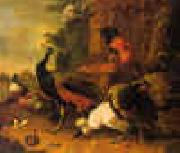 |
Melchior de Hondecoeter
|
|
1635-1695
Dutch
Melchior de Hondecoeter Gallery
Melchior d'Hondecoeter (c. 1636 ?C April 3, 1695), Dutch animalier painter, was born at Utrecht, and died in Amsterdam. After the start of his career, he painted virtually exclusively bird subjects, usually exotic or game, in a park-like landscapes.
Being the grandson of Gillis d'Hondecoeter and son of Gijsbert d'Hondecoeter, as well as nephew of Jan Baptist Weenix, he was brought up by the last to the profession of painting, when his father died. Of Weenix we know that he married Gilles daughter Josina in 1638. Melchior was, therefore, also related to Jan Weenix. The latter told Arnold Houbraken, in his youth Melchior was extremely religious, praying very loud, so his mother and uncle doubted if they would have him trained as a painter.
In 1659 he was working in the Hague and became a member of the painters' academy at the Hague. In 1663 Hondecoeter married Susanne Tradel in Amsterdam. While she was captious and having her sisters living in their house, Hondecoeter spent much time in his garden or drinking in the tavern in the Jordaan. On the Lauriergracht, where he used to live, he was surrounded by art dealers and various painters. Later he moved to a house on Prinsengracht. In 1686 he bought a small countryhouse in Vreeland. Hondecoeter died in the house of his daughter Isabel in Warmoesstraat but was buried in Westerkerk near his house. His inventory lists a small gallow, to keep birds in the right position, and several paintings of Frans Snyders.
Melchior began his career with a different speciality from that by which he is usually known. Mr de Stuers affirms that he produced sea-pieces. One of his earliest works is a "Tub with Fish," dated 1655, in the gallery of Brunswick. But Melchior soon abandoned fish for fowl. He acquired celebrity as a painter of birds only, which he represented not exclusively, like Johannes Fyt, as the gamekeeper's perquisite after a day's shooting, or stock of a poulterer's shop, but as living beings with passions, joys, fears and quarrels, to which naturalists will tell us that birds are subject. Without the brilliant tone and high finish of Fyt, his Dutch rival's birds are full of action; and, as Burger truly says, "Hondecoeter displays the maternity of the hen with as much tenderness and feeling as Raphael the maternity of Madonnas."
|
|
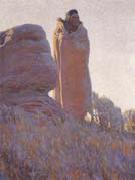 |
Maynard Dixon
|
|
American Painter, 1875-1946,was a noted 20th century American artist, whose oeuvre focused on the American West. He was married for a time to famed American photographer Dorothea Lange.
|
|
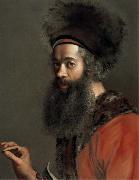 |
Maurice quentin de la tour
|
|
1704-88
French pastellist. He was one of the greatest pastellists of the 18th century, an equal of Jean-Sim?on Chardin and Jean-Baptiste Perronneau. Unlike them, however, he painted no works in oils. Reacting against the stately portraits of preceding generations and against the mythological portraits of many of his contemporaries, La Tour returned to a more realistic and sober style of work. The fundamental quality of his art lies in his ability to suggest the temperament and psychology of his subjects by means of their facial expression, and thereby to translate their fugitive emotions on to paper: 'I penetrate into the depths of my subjects without their knowing it, and capture them whole', as he himself put it. His considerable success led to commissions from the royal family, the court, the rich bourgeoisie and from literary, artistic and theatrical circles.
|
|
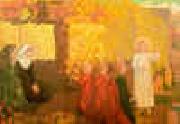 |
Maurice Denis
|
|
1870-1943
French
Maurice Denis Locations
French painter, designer, printmaker and theorist. Although born in Normandy, Denis lived throughout his life in Saint-Germain-en-Laye, just west of Paris. He attended the Lycee Condorcet, Paris, where he met many of his future artistic contemporaries, then studied art simultaneously at the Ecole des Beaux-Arts and at the Academie Julian (1888-90). Through fellow student Paul Serusier, in 1888 he learnt of the innovative stylistic discoveries made that summer in Pont-Aven by Paul Gauguin and Emile Bernard. With Serusier and a number of like-minded contemporaries at the Academie Julian
|
|
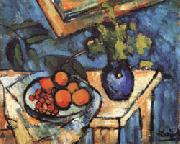 |
maurice de vlaminck
|
|
maurice de vlaminck,1876 to 1958,French painter, printmaker, draughtsman and writer. His nature, character, tastes and way of life were in perfect harmony with the freedom, daring and violence of his painting. He was brought up in a musical environment: his father, of Flemish origin, was a violin teacher and his mother, from Lorraine, was a piano teacher. He studied music himself to quite a high standard and later played the double-bass (and sometimes the bass drum, a source of considerable pleasure) in his regimental band. His family had come to live at Le V?sinet near Paris, and he spent his childhood both there and later at Chatou on the Seine. From 1892 he began to take an interest in painting, though he worked as a mechanic and became a racing cyclist.
|
|
|
|
|
|
|
|
|
|
|
|
|
|
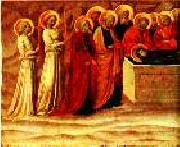 |
MASOLINO da Panicale
|
|
Italian Early Renaissance Painter, ca.1383-1447
Florentine painter of the early Renaissance, whose real name was Tommaso di Cristoforo Fini. His versatile painting incorporated his feeling for decorative color with strong modeling and spatial organization. He was admitted (1423) to the apothecaries' guild in Florence, in which painters were enrolled, and was soon commissioned to paint the frescoes in the Brancacci Chapel in Florence. These were continued by his pupil Masaccio upon Masolino's departure (1427) for Hungary and were completed by Filippino Lippi, thus greatly complicating the question of authorship; currently scholars attribute to Masolino St. Peter Preaching, St. Peter Healing the Cripple, The Raising of Tabitha, and The Fall of Adam and Eve. Upon his return to Florence, Masolino found painters occupied with problems of perspective, light and shade, and classical architecture and decoration, ideas that he utilized while retaining much of the old Giottesque tradition. He went to Rome where he painted frescoes in the Church of San Clemente for the Cardinal Branda Castiglione. For the same patron he decorated the church of Castiglione di Olona in the province of Como, Italy. There he represented scenes from the life of the Virgin and of St. John the Baptist. Attributed to Masolino are The Foundation of Santa Maria Maggiore and a Madonna and Christ in Glory (Naples);
|
|
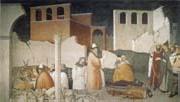 |
Maso di Banco
|
|
Italian Early Renaissance Painter, active 1320-1350
|
|
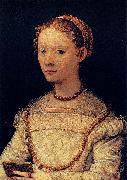 |
Maso da San Friano
|
|
(1536-1571) was an Italian painter active in Florence. His real name was Tomaso D'Antonio Manzuoli. He was born in San Friano and died in Florence.
According to Giorgio Vasari, Maso was a pupil of Pier Francesco Foschi while others claim it was Carlo Portelli. He collaborated with an elder Michelangelo on some projects.
His altarpiece of the Visitation was painted in 1560 for the church of San Pier Maggiore of Florence - now in Trinity Hall Chapel, Cambridge, England. A similar work can be seen in the Prato cathedral. After 1561, he painted in the church of Ognissanti, Florence and in the church of Santa Felicita. He participated in the decoration of the Studiolo of Francesco I with an oval canvas relating the Fall of Icarus story (1572). The canvas has an affected milling in individuals below and an anomalous perspective; both are classic features of mannerist painting. His second contribution Mining of Diamonds. A portrait of Ferdinando I de' Medici (1570) by Maso can be found in the Town Council Hall of Prato.
He is thought to be one of part of the Contra-Maniera or Counter-Mannerism movement in Florence. His most important pupils were Jacopo da Empoli and Alessandro Fei.
One of his paintings, thought to be of Cosimo I de Medici in 1560, is believed to be the oldest to show a watch
|
|
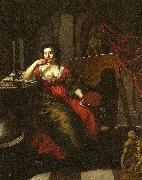 |
martin mijtens d.a
|
|
Martin Mijtens d.ä., Martin Meytens, Martin Mytens, född 1648 i Haag, Holland, död 1736 i Stockholm och begravd i Maria Kyrkan, nederländsk konstnär. Far till Martin Mijtens d.y. och son till porträttmålaren Isaac Mijtens.
Mijtens kom till Stockholm före eller under år 1677 och fann där ett så tacksamt fält för sin konst, att han beslöt stanna och 1681 satte han bo. Av hans första verk finns prov i Vibyholms och andra samlingar. De visar, att han hade en fin pensel, behaglig, varm, fastän tunn färg samt livlig och karakteristisk uppfattning av de skildrade. Med sina gråaktiga fonder, de ofta gulbruna draperierna och den enkla, naiva framställningen bildar Mijtens vid denna tid en bestämd motsats till David Klöcker Ehrenstrahl. Men dennes anseende och den gunst hans målningssätt vunnit var så stora, att även Mijtens måste böja sig. Så småningom blir hans bilder något anspråksfullare och djärvare, åtbörder och minspel kraftigare, bisakerna rikare, tonen i det hela mer högstämd, utan att personligheten försummas eller återgivningen av hudfärg överger den varma, åt gult dragande hållningen. Många bilder från denna hans andra period, som ungefär omfattar åren 1685- 1700, finns på Skoklosters slott, där Nils Bielke och hans grevinna, Eva Horn (i landskap), hör till mästarens bästa målningar, och på Vibyholm, i Uppsala (professor Schwedes porträtt i Uppsala museum och Olof Rudbeck d.ä.:s förträffliga bild, 1696, i medicinska fakultetens sessionsrum), i Hammers samling och på inte så få andra ställen. Konstnärens vana att högst sällan signera har gjort, att bilderna från dessa år ofta har blandats ihop med Ehrenstrahls och gått under den senares namn. Säkra skiljetecken är emellertid draperierna, som hos Mijtens saknar stil och ofta verkar tämligen slappt tecknade, och även det livligare åtbördsspelet. Man vet, att Mijtens, trots sin medtävlares anseende, var mycket eftersökt som porträttmålare och samlade förmögenhet på sin konst, så att han kunde bl.a. förvärva ett ej obetydligt konstgalleri. Han var även alltifrån 1692 och ganska länge kyrkoråd i den lilla holländska församlingen i Stockholm. 1697 och 1701 företog han resor till hembygden, den förra gången åtföljd av sin unge lärjunge Lucas von Breda. Utom denne ej obetydande konstnär utbildade Mijtens även sin son , som under det i Tyskland antagna namnet van Meytens berömde målaren (se denne), samt G. de Marees och möjligen flera. Man kan säga att omkring år 1700 vidtog Mijtens tredje maner. Karnationen får en dragning åt rött, som slutligen blir nästan stötande (t. ex. i Fabritius och prins Alexander av Georgiens porträtt på Gripsholms slott), teckningen vårdslösas mer, och de granna röda eller djupblå draperierna är stillösare och hårdare målade än förr. Dock lever ännu inte litet av den forna kraften i karaktärsteckningen, och anordningen bibehåller i mycket den förra prydligheten. Även denna hans nedgång finnes ej sällan företrädd i svenska samlingar. Märkligt är ett självporträtt (nu på Fånö i Uppland), emedan det enligt sägnen skall vara målat på hans höga ålderdom och under sinnessvaghet (om denna vet man för övrigt inget). Utom måleriet idkade han även gravyr samt utförde ett porträtt af Karl XI i svart maner och möjligen ett par andra blad i samma art (Gustaf Adolf de la Gardie, Georg Stiernhielm). Mijtens skall, enligt gammal uppgift, ha avlidit i Stockholm 1736; enligt en urkund levde han ännu i juli 1730. Hans målningssamling såldes av hans arvingar till preussiske överstemarskalken greve Gotter och kom inte långt därefter till storhertigen af Werttemberg. Carl Gustaf Tessin, som tycks ha hyst mycken ringaktning för Mijtens omtalar dock, att denna samling på sin tid ansågs som den enda framstående i riket (utom grefve Johan Gabriel Stenbocks). Att Carl Gustaf Tessin vid samma tillfälle kallar Mijtens "en gammal färgskämmare" och även annars talar illa om hans konst, tycks visa att Mijtens vid mitten af 1700-talet var fullkomligt bortglömd, åtminstone sådan han varit under sin bästa tid. Sedan finns han ej heller mycket omtalad. Först genom konstföreningens utställning 1841 och Nils Arfwidssons anmälan av honom i Frey återupptäcktes han; och man fann då, att Sverige i honom ägt en konstnär av sådan betydelse, att han kan mäta sig även med våra största mästare. Hans inflytande på den svenska konstens fortbildning blev dock ej särskilt stort. David Klöcker Ehrenstrahl och David von Krafft ställer honom i det avseendet fullkomligt i skuggan.
|
|
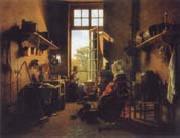 |
Martin Drolling
|
|
French Academic Painter, 1752-1817,After receiving initial training from an unknown painter in Selestat, Drolling moved to Paris, where he attended courses at the Acad?mie Royale. He supplemented his education there by studying Flemish and Dutch Old Masters in the collection at the Luxembourg Palace. From the Flemish school he derived his own rich impasto, while the Dutch was to influence him in his meticulous, supremely descriptive and unsentimental style of painting as well as his choice of subject-matter: unfussy bourgeois interiors and frank portraits. Drolling first exhibited at the Salon de la Correspondance in 1781 and again in 1782 and 1789. After the French Revolution he was able to participate in the Salon at the Louvre, despite the fact that he had never become a member of the Academie Royale. He exhibited from 1793 to 1817, although the majority of his works extant today were shown after 1800. From 1802 to 1813 he was employed by the Sevres porcelain manufactory, and many of his designs were engraved.
|
|
 |
Martin Drolling
|
|
1752-1817
B.Oberbergheim
French Martin Drolling Art Gallery
After receiving initial training from an unknown painter in Selestat, Drolling moved to Paris, where he attended courses at the Academie Royale. He supplemented his education there by studying Flemish and Dutch Old Masters in the collection at the Luxembourg Palace. From the Flemish school he derived his own rich impasto, while the Dutch was to influence him in his meticulous, supremely descriptive and unsentimental style of painting as well as his choice of subject-matter: unfussy bourgeois interiors and frank portraits. Drolling first exhibited at the Salon de la Correspondance in 1781 and again in 1782 and 1789. After the French Revolution he was able to participate in the Salon at the Louvre, despite the fact that he had never become a member of the Academie Royale. He exhibited from 1793 to 1817, although the majority of his works extant today were shown after 1800. From 1802 to 1813 he was employed by the Sevres porcelain manufactory, and many of his designs were engraved.
|
|
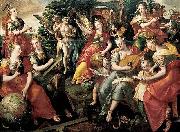 |
Marten de Vos
|
|
(1532-1603), also Maarten, was a leading Antwerp painter and draughtsman in the late sixteenth century.
|
|
|
|
|
|
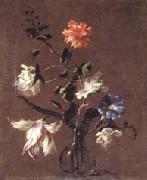 |
Mario Dei Fiori
|
|
Italian painter , Penna Fermana 1603- Rome 1673
Italian painter. He was the first and most famous Roman painter to specialize in flower-pieces and one of only four still-life artists included by Leone Pascoli in his collection of artists' biographies. The early sources and old inventories attribute many flower paintings in distinguished Roman collections to the Caravaggesque painter Tommaso Salini, and since the 18th century Mario's name has been linked with his, and it has been assumed that he trained with Salini. This apprenticeship is difficult to document, yet a comparison of Mario's pictures with inventory descriptions of works by Salini confirms that Mario was influenced by his art. To the minute observation of various kinds of flowers, Mario added a refined sense of design and an interest in effects of light, still linked to Caravaggio in the use of a dark background.
|
|
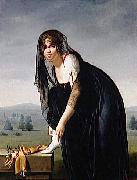 |
Marie-Denise Villers
|
|
(1774 - August 19, 1821) was a French painter, who specialized in portraits. She was born Marie-Denise Lemoine in Paris. She came from an artistic family, and her sisters Marie-Victoire Lemoine and Marie-Élisabeth Gabiou were also accomplished artists. In 1794, Marie-Denise married an architecture student, Michel-Jean-Maximilien Villers.
Villers was a student of the French painter Anne-Louis Girodet de Roussy-Trioson. She was first exhibited at the Paris Salon of the Year VII (1799). Villers' most famous painting, Young Woman Drawing,
|
|
|
|
|
|
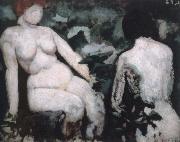 |
marcel duchamp
|
|
marche duchamp (1887 to 1968),French painter, sculptor and writer. The art and ideas of Duchamp, perhaps more than those of any other 20th-century artist, have served to exemplify the range of possibilities inherent in a more conceptual approach to the art-making process. Not only is his work of historical importance
|
|
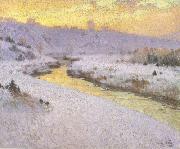 |
marc-aurele de foy suzor-cote
|
|
Canadian Painter, 1869-1937
was a Canadian painter and sculptor. He was born in Arthabaska, Quebec in 1869. He studied at the École des Beaux-Arts in Paris with L??on Bonnat during the 1890s. After his return to Quebec in 1908, he produced many impressionist paintings of the Quebec landscape, as well as portraits, nudes, historical paintings and later sculptures.
|
|
|
|
|
|
|
|
|
|
|
|
|
| Wholesale China Oil Painting Wholesale Oil Painting China Xiamen Portrait Reproduction on canvas Chinese Oil Painting Wholesale USA Oil Painting |
|
|
|
|
|